The Traditional City Vs. The “Radiant City”
July 20, 2008
I’ve talked about real cities vs. the suburban disaster. The basic characteristic of real cities is that it is easier to walk (or bike or take the subway/streetcar etc.) than it is to drive. People have been living in dense cities since the beginnings of recorded history. Only in the recent period — after World War II — have people begun to make cities which are near-impossible to walk in, essentially making everyone a handicap case requiring motorized wheelchairs to get around, and thus leading to a number of problems that won’t be solved until this form of construction is abandoned.
Other posts in this series:
December 2, 2007: Let’s Take a Trip to Tokyo
October 7, 2007: Let’s Take a Trip to Venice
June 17, 2007: Recipe for Florence
July 9, 2007: No Growth Economics
March 26, 2006: The Eco-Metropolis
But what are the alternatives? There are two basic templates for “dense urban design” today. One is what I call the Traditional City. The other is the “Radiant City.” The differences are:
The Traditional City: Many small streets, suitable for walking but hard to drive. Buildings usually built right at the edge of the street/sidewalk. Streets are plentiful and “blocks” — the area between the streets — are small (though there are typically some big ones too.) Buildings usually side-by-side, almost touching. Building height traditionally at the limits of stair-climbing, about seven stories maximum. Many parks, some stand-alone plazas, but no “landscaping.” Little to no parking for cars. Streets are often crooked and non-rectilinear.
The “Radiant City”: Very large streets, suitable for several lanes of automobile traffic. Very large buildings, typically glass-walled high rises of ten to one-hundred stories tall. Buildings are widely spaced. Buildings typically not built to the edge of the sidewalk/roadway, but rather surrounded by some sort of “landscaping,” either grass or a paved “plaza.” Streets are widely spaced, and “blocks” are large. Streets are often on a rigid grid design, or if not a grid, at least a pattern that looks very well-thought-out when observed in a scale model.
Remember my First Law of urban design:
Really Narrow Streets
It should be clear that I prefer the Traditional City to the “Radiant City.” The Traditional City can be a cesspool, but it can also be a center of great life, art and excitement. “You can’t keep them on the farm once they’ve seen Paris.” The “Radiant City” may have some life, art and excitement going on, but the city design itself does not contribute to this, but rather prevents it. Whatever happens is in spite of the “Radiant City” design, which is contrary to such activities by its construction. It is vaguely tolerable. I do think it is possible to build tall buildings within the context of the Traditional City, with the New York City skyscraper construction of the 1920s and 1930s a pretty good example of this. The Empire State Building is a very tall building, but at street level, it fits right in. You’d have to lean back and look up to even know that you’re looking at the tallest building in the city. Rockefeller Center also works quite well. Compare this to the typical “glass pyramid” construction of today — surrounded by landscaping, parking, and large roadways.
Also, I think the “Radiant City” is better than the Suburban Disaster. But not good enough to bother with, really.
The “Radiant City” idea got started in the 1920s, as a response to the newfound ability to make very tall buildings, combined with a general discontinuity in civilization (in so many ways) in Europe following World War I. Also, there is a strong flavor of the rising influence of the United States in world affairs — combined with a more “American” influence on urban ideals, which meant Small Town America. The “Radiant City” is basically “Skyscraper Suburbs.” Just look at the list. Easy to drive. Free standing, surrounded by grass. Lots of parking. Big Big Big everything. If you take a suburb, and swap out the McMansions for glass high-rises, you pretty much have the “Radiant City.”
I think the “Radiant City” ideal was sort of floating in the ether in the 1920s, but one guy who had his cultural antenna particularly attuned to this trend was a French guy who called himself “Le Corbusier” (born Charles-Edouard Jeanneret-Gris).
Wikipedia entry on Le Corbusier including his plan for the “Radiant City.”
“Technological historian and architecture critic Lewis Mumford wrote in Yesterday’s City of Tomorrow, the extravagant heights of Le Corbusier’s skyscrapers had no reason for existence apart from the fact that they had become technological possibilities; the open spaces in his central areas had no reason for existence either, since on the scale he imagined there was no motive during the business day for pedestrian circulation in the office quarter. By mating utilitarian and financial image of the skyscraper city to the romantic image of the organic environment, Le Corbusier had, in fact, produced a sterile hybrid.
James Howard Kunstler, a member of the New Urbanism movement, has criticized Le Corbusier’s approach to urban planning as destructive and wasteful: Le Corbusier [was] … the leading architectural hoodoo-meister of Early High Modernism, whose 1925 Plan Voisin for Paris proposed to knock down the entire Marais district on the Right Bank and replace it with rows of identical towers set between freeways. Luckily for Paris, the city officials laughed at him every time he came back with the scheme over the next forty years and Corb was nothing if not a relentless self-promoter. Ironically and tragically, though, the Plan Voisin model was later adopted gleefully by post-World War Two American planners, and resulted in such urban monstrosities as the infamous Cabrini Green housing projects of Chicago and scores of things similar to it around the country. [12]”
“Identical towers set between freeways.” Hmmmm. Five words — that about sums it up! Which just goes to show that the failings of the “Radiant City” are well known. Today, we recognize Le Corbusier’s “Radiant City” signature in all of the crapulous housing for the poor created during the 1950s and 1960s. And yet, people still keep building this garbage everywhere.
Okay, let’s look at some Traditional Cities:
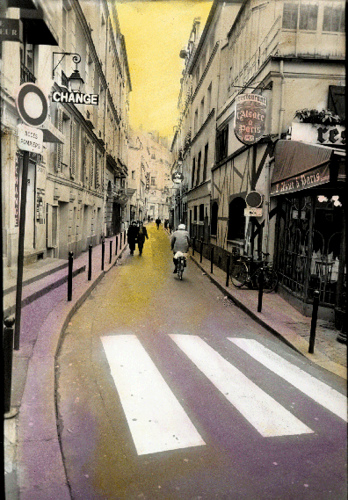
This is Paris. Buildings up against the sidewalk: check. Narrow streets, hard to drive, not much parking: check. Buildings under 10 stories, adjacent to each other: check. Parks and plazas, but no “landscaping”: check.
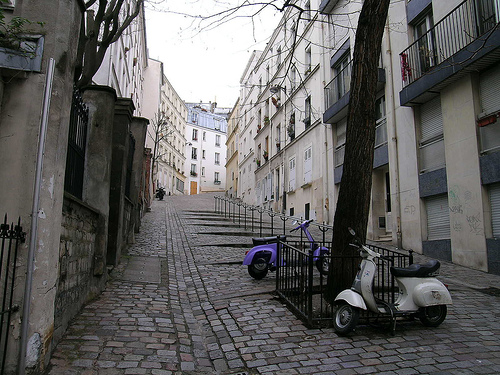
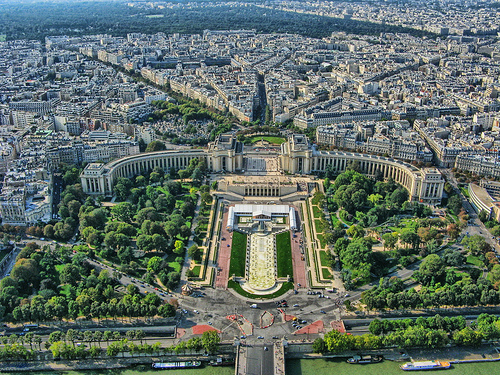
I’ll take the “City of Light” over the “Radiant City,” thanks.
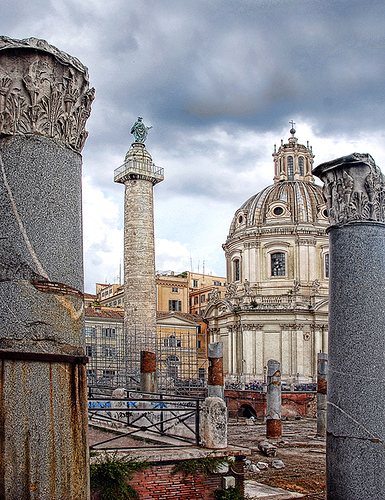
Rome.
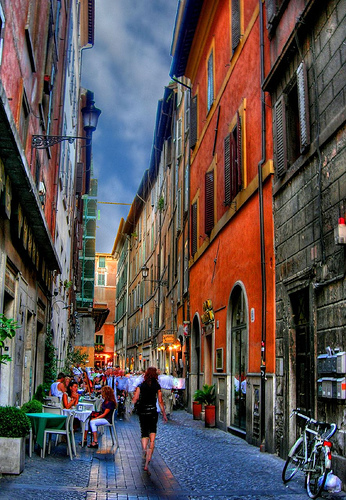
Rome.
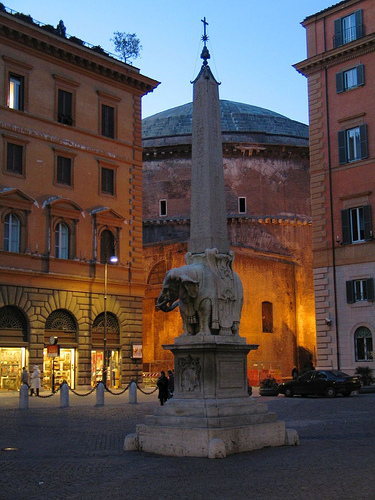
Rome.
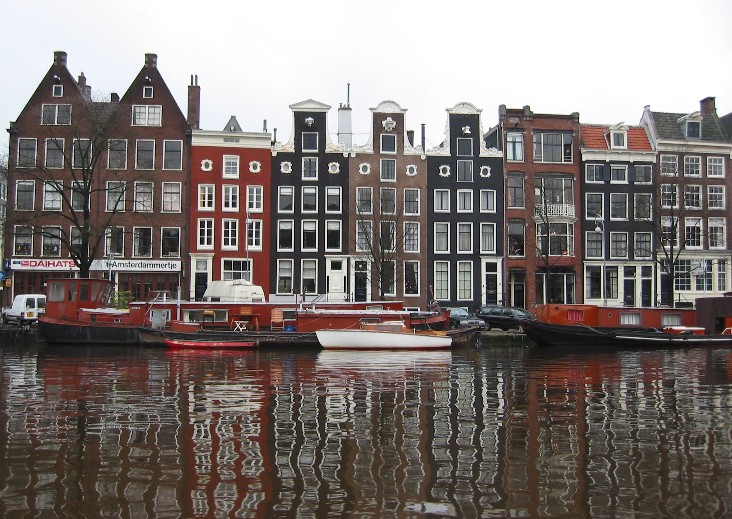
Amsterdam. Nice!
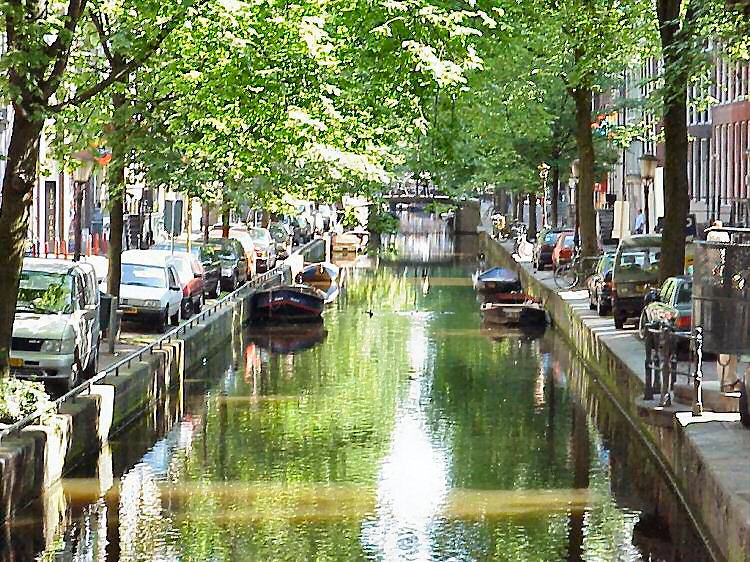
More Amsterdam.
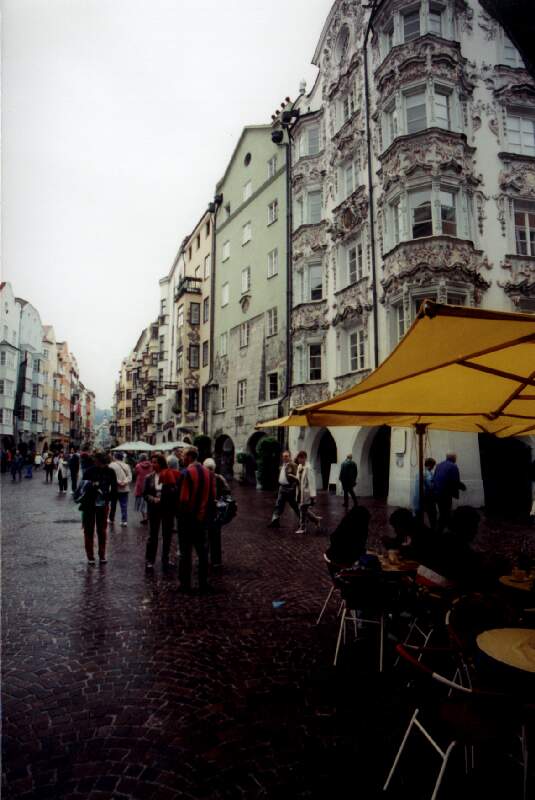
Innsbruck, Austria.
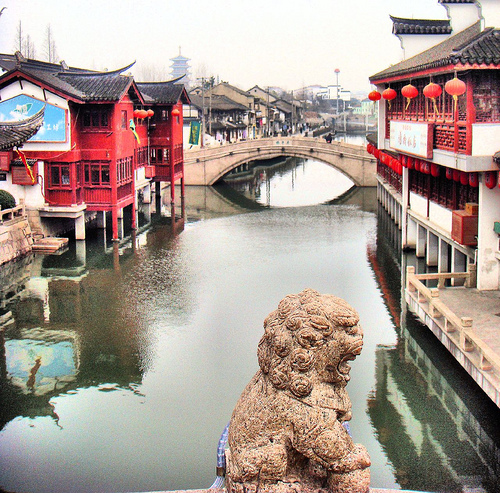
An older part of Shanghai, China.
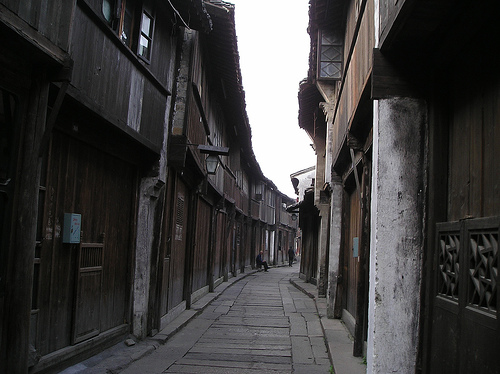
Traditional Shanghai small street.
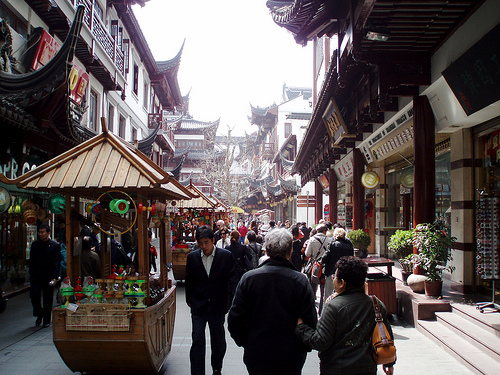
Shanghai.
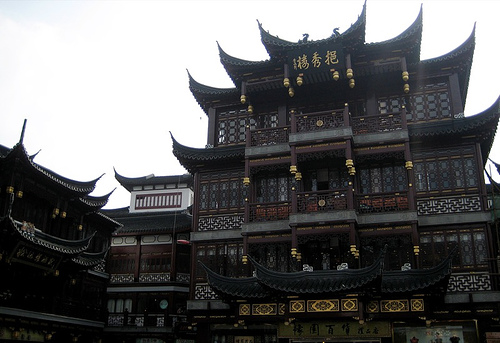
Holy shit! That is some architecture.
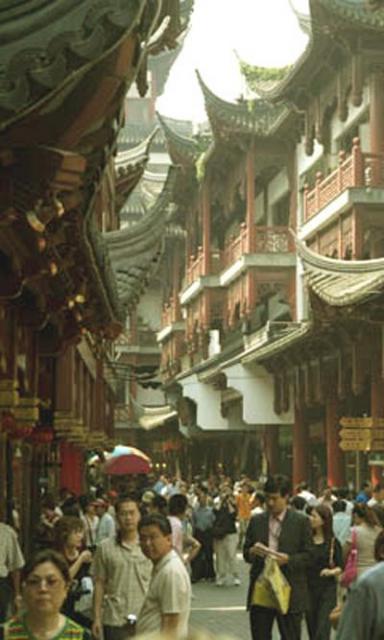
Shanghai. Look at those buildings! Wow. And where are the CARS?
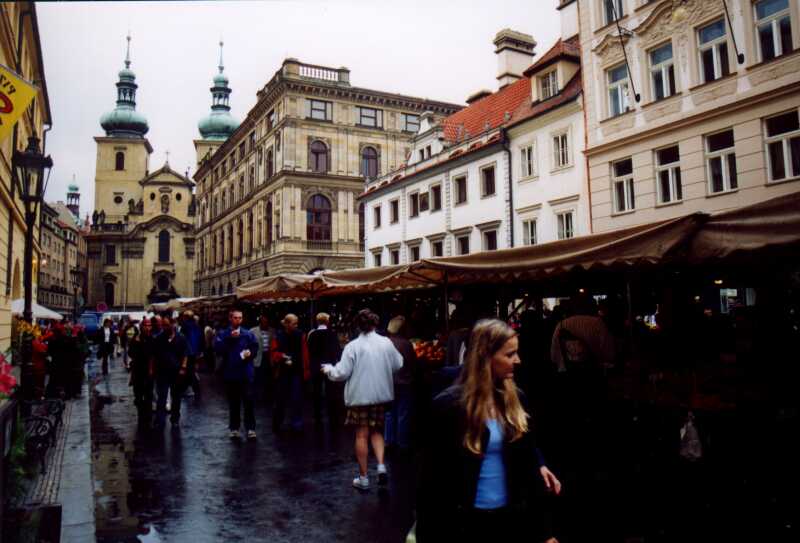
Prague, Czech Republic.
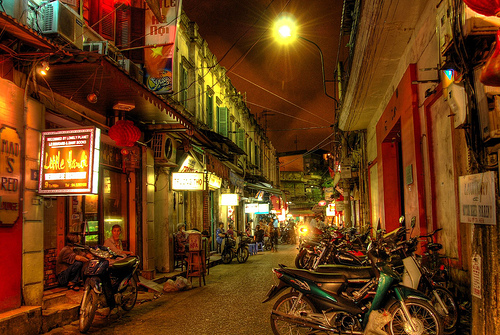
Hanoi, Vietnam

Hanoi.
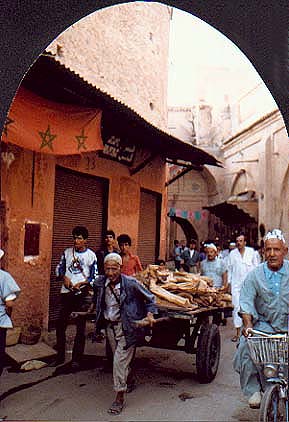
Marrakesh, Morocco.
Well, you get the idea. But, it’s important to have this little exercise, to consciously recognize what a Traditional City looks like, especially in the United States where it is almost nonexistent. Do you see that, whether Paris or Hanoi or Prague or (the older parts of ) Shanghai, they all have the same basic characteristic?
Really Narrow Streets.
And, of course, everything that goes along with that in the design of the Traditional City. You can sense, just from the photos, that if there is a reasonably good transportation system (subway, etc.), then you can get around and live there without a car, and even without a desire for a car.
OK, take a deep breath. It’s time for the “Radiant City,” if we can stand it.
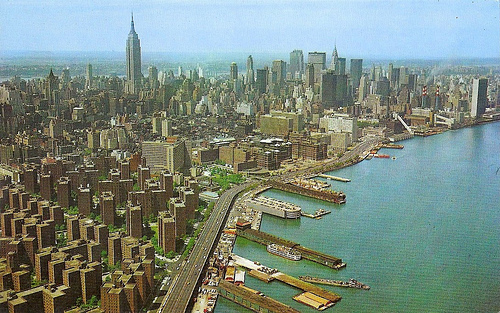
The First Wave of the “Radiant City” ideal, public housing projects in New York. Notice, first, the tall buildings (in the lower left corner, not the office skyscrapers of Midtown.) Notice the Big Streets, the fact that the buildings don’t abut the street, but are surrounded by greenery which is not really a park … sort of a no-man’s land. (Don’t go there after dark!) Giantism everywhere. Architecture that tends toward simple boxes. From here on, you’ll notice that we tend to get a “helicopter’s eye view” of things, rather than a street-level, human size view. That’s because all of this is designed from the helicopter view in mind, and the scale-model, rather than as real things in real life size. The result is that everything is giant-size. We’ve been trained to like this stuff for the last fifty years, so it may take a moment to overcome the “yes, I like that better” feeling that has been implanted in you by decades of condo salesmen.

New condo developments in Beijing. Once again, not only are the buildings tall and monolithic (no street level detail), but we have BIG streets with LOTS of cars, parking, and that landscaping everywhere which isn’t really a park, but rather a sort of aesthetic buffer against the endless traffic and the Great Pyramid buildings everywhere.
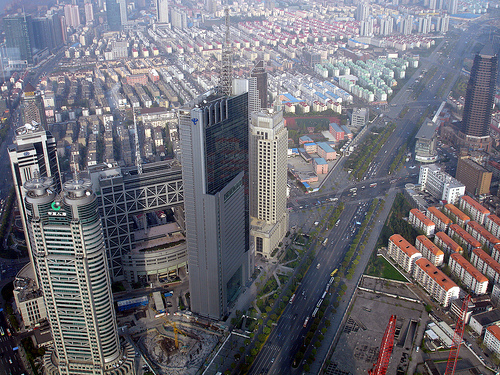
Recent development in Shanghai. BIG BIG BIG everywhere. See all the weird greenery, serving as a sort of buffer between the CARS CARS CARS and the Great Pyramid buildings? Lots of cookie-cutter condo developments, which look just like … housing for poor people in the U.S., or maybe army barracks.
Despite its apparent density, the “Radiant City” is designed for CARS CARS CARS, not people.

Singapore. Sort of a model for “Radiant City” development over the last twenty years. BIG BIG BIG. Giant streets. Mondo traffic. That funny landscaping crap everywhere. Imagine trying to walk to this place from your apartment!
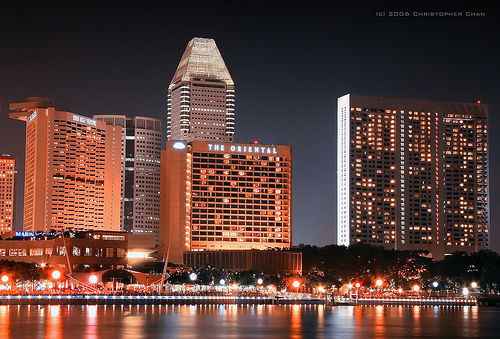
More Singapore. OK, I know you’re supposed to be impressed by the “skyline” — woo! flashing lights!
Now, don’t get me wrong. I like Singapore. I like it in spite of the “Radiant City” crap everywhere.
We’ve all seen enough of this stuff that I don’t think I need to go on. It’s everywhere!
One thing you will notice is that the Traditional City is vastly more sophisticated from an aesthetic standpoint. Just compare the photos above to the “concrete box with blinking lights” style below. Oddly enough, the “Radiant City” isn’t even more dense than the traditional city, although it might seem that way because of the tall buildings. So much of the surface area is taken by that weird landscaping, and the giant roadways, that even though the buildings are tall they are spaced quite far apart. The small streets and 3-10 story buildings of the Traditional City are at least as dense, maybe denser.
Now, like I said, I am not necessarily against very tall buildings. They can be integrated into a Traditional City format with some success. Try Lower Manhattan for example. Another interesting example is Raffles Place in Singapore, the heart of the Financial District.
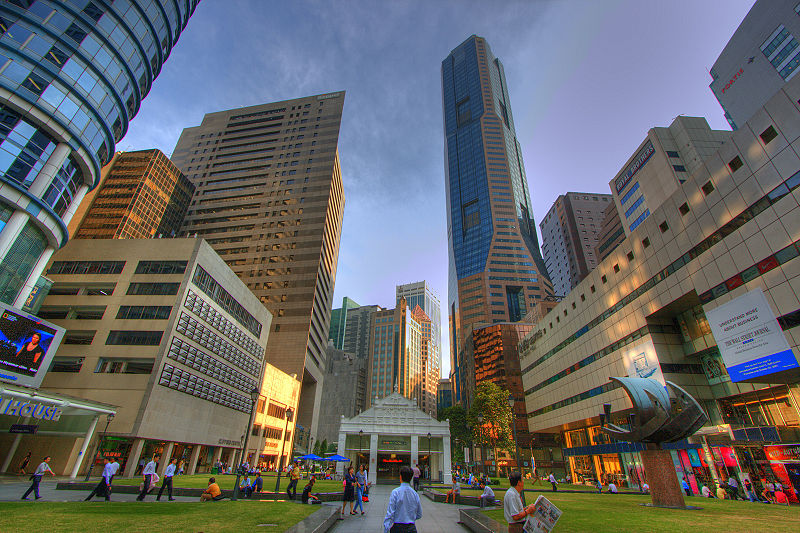
Raffles Place, Singapore
Here we have a real plaza — it’s a place you can sit and eat lunch, sunbathe etc. and many people do — surrounded by high-rises. (Instead of a high rise surrounded by useless “landscaping”, further surrounded by ten lanes of traffic.) This is a very traditional — and successful — format. The high rises are set very close to each other, and you can see that each one has a more traditional”shop front” on the ground floor, instead of just a glass wall. There are no streets between the buildings — this is a pedestrian only zone.

Piazza del Campo, Siena, Italy
See the resemblance? Actually, once you get over twenty stories or so, the height of the building becomes very hypothetical. From ground level, a twenty story building and a hundred story building (the Empire State Building for example) are almost the same, except for the gloominess that results due to the blocking of sunlight.
Please, let’s not build any more of this “Radiant City” crap. They laughed at Le Corbusier for forty years. Tear down the City of Light to build the City of Shit? Ha Ha Ha! Maybe only the French got the joke. As for the rest of the world — the joke’s on them!
Suckers!

